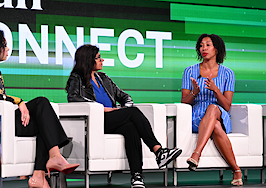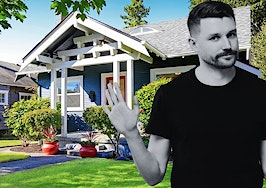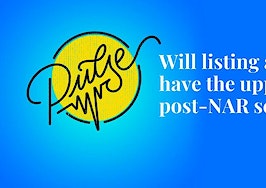This report is available exclusively to subscribers of Inman Intel, a data and research arm of Inman offering deep insights and market intelligence on the business of residential real estate and proptech. Subscribe today.
Consider, for a moment, the humble open house, a century-old method of marketing and showing homes that predates the internet — and all the sophisticated tracking and sales tools it’s spawned — by six decades or more.
At their peak, they were an event, a pit stop after church invariably held on Sundays, when newspaper circulation was at its highest and most likely to draw eyes to print advertising, and “blue laws” restricted business in other sectors. At one open house in the 1950s, a homeowner in Dallas caused a commotion by offering soda to his guests and a Cadillac to the buyer. Thousands showed up.
But in the nearly 75 years since that heyday, technological advances, lifestyle changes and media demassification have eroded the value of the age-old practice, resulting not only in fewer home sales but far less effective lead generation methods than what’s now available from proptech providers.
The global pandemic may well have been the final nail in the coffin for the open house — data from the National Association of Realtors shows the share of buyers who found the home they purchased through an open house had fallen 60 percent from 15 percent in 2001 to an abysmal 6 percent in 2020.
The share dropped another 33 percent by 2022, reaching an all-time low of 4 percent as COVID safeguards forced agents and brokers to lean on 3D walkthroughs, integrated floor plans and digital staging, and an unprecedented sales run rendered open houses useless as listings sold within 24 hours or less.
“[Open houses] are crappy for the seller because they’re inconvenient,” real estate veteran Jay Thompson told Inman in a previous article. “It’s a big giant pain in the ass for the homeowner.”

NAR has yet to release its 2023 metrics; however, the year’s dramatic downshift from 2020 and 2021’s record-breaking sales peaks hint that the institution of the open house has more to give.
Although a downturn inevitably results in lower open house rates due to fewer homesellers entering the market, data from startup HomeLight and anecdotal evidence from agents who spoke to Intel said downturns force professionals to lean on old-school sales tactics to build relationships, generate leads and sell homes, meaning open houses could come back into vogue.
“Open houses on pretty much any listing are going to be great. It just gets more people in the door,” Sacramento-based Realtor Jessica LaMar told Intel. “As the majority of us know, word-of-mouth marketing works the best.”
The downfall — and potential recovery — of open houses
National Association of Realtors data shows the internet, real estate agents and open houses have been the three fundamental ways homebuyers find the home they ultimately buy for the past two decades. However, the internet — including portals, agent websites, social media and other platforms that entails — has become the chosen starting point for the majority of consumers, the data shows.
In 2001, homebuyers were just as likely to find the home they purchased from a friend, neighbor or relative (8 percent) as they were to find it on the Internet (8 percent). Open houses were the second-most popular way they found a home at 15 percent, and real estate agents blasted the competition, with 48 percent of homebuyers reporting they purchased a home their agent showed them.
That trend held for another three years until the share of homebuyers who found their home on the internet experienced a dramatic spike from 15 percent in 2004 to 24 percent in 2005 — a 60 percent year-over-year increase. Meanwhile, the metrics for open houses decreased from 16 percent to 15 percent — a 6.25 percent year-over-year decrease.
The tides shifted again in the early 2010s when the Internet also usurped real estate agents as the primary source for finding homes. In 2011, 40 percent of homebuyers found the home they purchased on the Internet, while 35 percent found it through an agent and 11 percent through an open house.
The Internet’s dominance has strengthened over the past 11 years, with 51 percent of homebuyers finding the home they purchased online. Meanwhile, the share of homebuyers who found the home they purchased through a real estate agent or open house has weakened to 28 percent and 4 percent, respectively.

Source: NAR 2019 Home Buyers and Sellers Generational Trends Report
While the data shows consumers’ embrace of Internet sources as the primary downfall of open houses, NAR’s data shows market health is a contributing factor with downturns inevitably diminishing the impact of open houses.
For the past 21 years, the share of homebuyers who purchased the home they found at an open house tended to fluctuate 1 percentage point year over year. The share went from 15 percent to 16 percent between 2001 and 2003 (data for 2002 is missing), and dropped to 15 percent in 2005 before dropping to 14 percent in 2007. It bounced up one more time in 2008 to 15 percent before falling 3 percentage points to 12 percent in 2009 — the height of the housing crash.
The share of homebuyers who purchased the home they found at an open house continued to decline after 2009, but at the former trend of 1 percentage point rate per year.
The next time the metric deviated from the trendline was in 2022 when the market’s low-interest-rate-induced sales came to a sudden halt, as the Federal Reserve began raising rates. From 2021 to 2022, the share of homebuyers who purchased the home they found at an open house dropped 3 percentage points from 7 percent to 4 percent — the same rate of change seen from 2008 to 2009.
Real estate referral and technology startup HomeLight’s two latest seasonal market reports reflect the market’s double-edged impact on open houses. The startup’s summer 2023 report highlighted a nearly 50 percent drop in listings and a 20 percent decline in home sales compared to 2022, which correlates to a smaller share of open houses.
“The eye-catching for-sale signs and open house balloons that historically dot many manicured lawns around this time each year are strangely lacking,” the report read. “… The depleted supply of homes has re-opened the door for bidding wars to resume on a scarce amount of listings, despite suppressed buyer demand, while keeping prices high.”
However, another HomeLight report showed agents are seizing the slowdown and strategically using open houses to assuage anxious buyers and generate multiple offers. Seventy-four percent of the nearly 1,000 agents HomeLight surveyed said they’re “leaning into open houses” in the midst of a slowdown.
Bizzarro Group broker-owner Matthew Bizzarro echoed HomeLight’s report findings and said he’s seen fewer and fewer open houses in New York City. Bizzarro said the decline is partially due to some agents’ laziness and partially due to burnout.
“Agents are feeling that it’s not a good use of their time anymore. They are feeling burned out,” he told Intel. “They’re feeling frustrated for constantly having to go to things and have nobody show up. I understand that, but it’s a mistake [to skip open houses] — especially in this market.”

Zillow
Zillow’s latest open house data shows the typical seller hosts only one open house. But, the share of homesellers skipping them altogether has declined 10 percentage points from 43 percent in 2021 to 33 percent in 2022, and the share of homesellers hosting between one and three open houses increased 12 percentage points over the same time period.
“Sellers are hiring us to do a job, which is sell their place,” Bizzarro said of client expectations. “If you’re not doing [open houses] — it doesn’t have to be for every listing — you’re really not giving it your best to sell your client’s home.”
Leveraging tech to get more buyers in the door
OpenHouse.ai co-founder and CEO Will Zhang said homebuilders have the same struggle as real estate agents in boosting open house attendance.

Will Zhang | Credit: LinkedIn
Zhang said new-home buyers often get overwhelmed with the sheer number of choices thrown at them during an open house in a builder community, which gives them the opportunity to experience a variety of layouts, features, fixtures and finishes a builder provides. “Analysis paralysis” pushes buyers to delay starting the process and puts builders behind the eight-ball as they attempt to fill an emerging neighborhood.
“Of course, the new construction market is different than the resale market,” he said. “[In new construction], people get to have all these options and customizations. They get excited in the beginning but then get into analysis paralysis.”
Zhang said his company helps alleviate buyer paralysis by supercharging homebuilders’ websites with AI-powered quizzes that help narrow down buyers’ inventory choices based on their budget and preferences. From there, each listing has an integrated floor plan, 3D walkthrough and lot maps a buyer can scroll through.
Builders can automatically capture buyer information to their CRM and have one of their home experts connect with a buyer on the spot to schedule them for an open house or private showing.
Zhang said his clients, which include builders in Canada and 20 U.S. states, have contact conversion rates 200 percent higher than the industry average (0.5 percent vs. 1.53 percent) by handling the leg work before a buyer comes to an in-person event.
“It can be hard for a buyer to articulate what they’re looking for,” he said. “… Whatever an agent can do to have an individual conversation [with a buyer beforehand] to understand where they’re coming from will guide them to a great customer experience, which ultimately drives the sales.”
Zhang said professionals in the resale market are, in large part, ahead of the game in terms of the plethora of tools that are available to make open houses an easier and more worthwhile endeavor.
“Builders are coming from using Excel sheets,” he said with a laugh.
However, he said OpenHouse.ai is an example of how professionals on both sides of the market can better leverage technology to squeeze the most out of open houses. “Many tech companies have failed in helping their audiences understand AI — it’s not a replacement for human interaction, it’s automation,” he said.
Short-term vs long-term ROI
Although she’s not using AI, award-winning Engel & Völkers broker Nicole Beauchamp said she leverages technology at her open houses to integrate visitors into her CRM and develop a plan to nurture the lead into a future sale.

Nicole Beauchamp
“I had an open house for a rental listing that I had earlier this summer, and what I did is create sort of an open house landing page,” she said. “I knew that venue was going to have a lot of traffic, and I wanted to distinguish between the literal hundreds of inquiries that I had in my emails versus the people who actually showed up, and I wanted a very quick process for them to sign in.”
Beauchamp said creating landing pages has helped her group leads based on their readiness to transact and employ the correct tactics to nurture them into a sale — whether their timeline is three weeks, three months or a year away.
“I was able to go back and send a very specific follow-up email to the people who’d actually been through the property with follow-up steps and instructions,” she said.
Bizzarro and LaMar have simpler approaches to open houses, with LaMar simply asking buyers to provide their contact information on a written sign-in sheet.

Jessica LaMar
“It’s old school, but it works,” LaMar said.
All three of them said professionals can increase the return on investment for their open houses by being more strategic about which properties to host an open house for and the needed budget to get the job done.
Beauchamp said she spends $100 to $200 on drinks and light refreshments for basic open houses. However, she’s spent several thousand dollars on hosting one-of-a-kind, invite-only opens, including a luxury jewelry trunk show.
“You can think of things in different creative ways to try to tap into different audiences,” she said.
They also said agents can pull in vendors to help sponsor open houses, which offsets the personal costs. However, all three said the main driver of open house traffic is a well-priced listing.

Matthew Bizzarro
“My experience is the higher the price point, the more that’s potentially done,” Bizzarro said. “You need creativity in this market to succeed, but it also comes down to the price. If your home is priced well, people will come and it will sell.”
Each of them said it’s difficult to calculate the exact ROI an open house brings when it comes to garnering offers. In 2018, HomeLight said the typical open house led to offers at least $9,000 over the asking price.
LaMar said the value of open houses comes from the ability to have face-to-face interactions with potential clients and build a pipeline of transactions that will come to fruition six to 12 months down the line.
“I closed just under $5 million in sales this month just off of open house clients,” she said.













